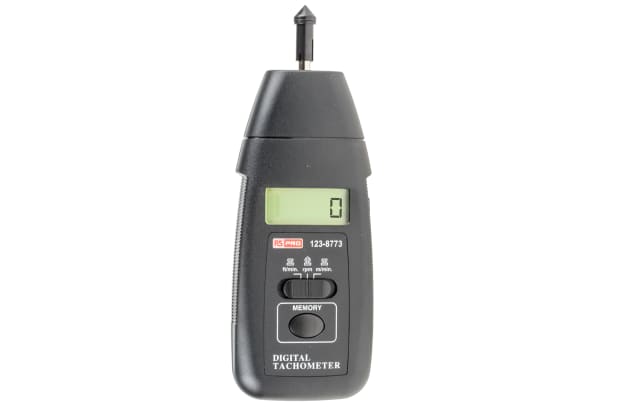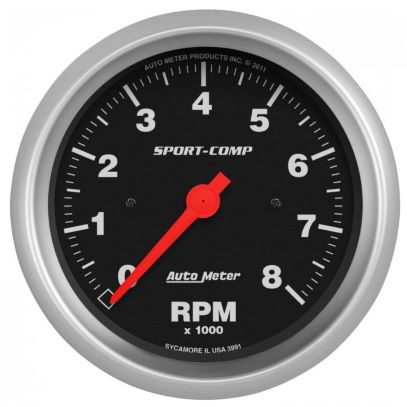Just How a Tachometer Helps Display Engine Health and Efficiency
Just How a Tachometer Helps Display Engine Health and Efficiency
Blog Article
The Value of a Tachometer in Checking Engine Speed and Performance in Automotive Applications
In the realm of vehicle design, the tachometer stands as a critical instrument in the motorist's toolbox, giving a direct window right into the inner workings of an automobile's engine. Beyond its feature as a plain gauge of revolutions per minute (RPM), the tachometer offers as a crucial tool for lovers and specialists alike, using real-time understandings into engine efficiency and wellness. Understanding the relevance of this tool surpasses surface-level observations, diving into the elaborate partnership in between engine rate, power output, and overall driving experience. As we check out the diverse function of the tachometer in automobile applications, a much deeper appreciation for its effect on lorry dynamics and performance starts to arise.
Relevance of Monitoring Engine RPM
Monitoring engine RPM, or transformations per min, is an important aspect of automobile maintenance and efficiency evaluation. Engine RPM straight associates with the speed at which the engine's crankshaft turns, indicating just how rapidly the engine is running - tachometer. By checking RPM, mechanics can analyze the health of the engine, identify potential issues, and fine-tune performance. An unusual RPM analysis may signal troubles such as engine misfires, malfunctioning trigger plugs, or issues with the fuel shipment system. Continually high RPM analyses could show hostile driving behaviors or the need for a higher equipment shift to improve gas performance.
Additionally, keeping track of engine RPM is vital for efficiency assessment in auto racing and high-performance automobiles. Preserving optimum RPM levels is vital for achieving peak power output and velocity. Racers typically use tachometers to ensure they are running within the suitable RPM variety for optimum performance. In recap, keeping an eye on engine RPM is not only important for detecting issues yet also for optimizing engine efficiency in various auto applications.

Benefits of Real-Time Data
In auto applications, real-time information plays a crucial duty in giving immediate understandings right into the efficiency and condition of the vehicle. By continually keeping track of numerous specifications such as engine speed, temperature, gas usage, and much more, real-time information provides numerous advantages that add to enhanced performance and security on the roadway.
One considerable benefit of real-time information is its capability to sharp motorists and specialists to any kind of anomalies or problems immediately. This proactive method makes it possible for quick identification of potential issues, permitting prompt treatments to avoid further damages or breakdowns. In addition, real-time data promotes performance optimization by supplying prompt comments on driving practices and engine performance. Chauffeurs can change their habits in real-time based on this info to accomplish better gas economic situation and extend the life expectancy of their automobile.

In addition, real-time information plays an essential duty in modern-day automotive diagnostics, making it possible for professionals to promptly diagnose and address malfunctions. This brings about lowered downtime, lower upkeep expenses, and eventually, enhanced general automobile dependability and long life (tachometer). useful site By taking advantage of the power of real-time data, automobile stakeholders can make educated choices that positively affect both the performance and durability of the automobile
Influence On Equipment Shifts
Efficient equipment shifts in vehicle applications considerably influence general performance and driving experience. The tachometer plays a critical duty in optimizing gear changes by providing real-time engine rate data to the chauffeur. When approaching the redline on the tachometer, it indicates the driver to upshift to avoid over-revving the engine and causing potential damage. On the various other hand, downshifting at the appropriate minute can assist keep the engine in its power band, ensuring receptive hop over to these guys velocity when required.
In addition, the tachometer help in attaining smoother equipment transitions, particularly in hands-on transmissions. By keeping an eye on engine speed, drivers can carry out equipment changes at the ideal RPM array, decreasing snagging activities and lessening wear on the transmission components. This accuracy on duty changes not only boosts driving comfort but likewise adds to fuel effectiveness.
Enhancing Gas Efficiency
Offered the critical duty the tachometer plays in maximizing equipment changes for efficiency and engine health and wellness, it straight adds to optimizing gas performance in vehicle applications. By giving real-time comments on engine speed, the tachometer assists vehicle drivers in maintaining one of the most reliable RPM range for gas economic climate. When motorists constantly keep track of the tachometer and change their motoring routines as necessary, they can stay clear of unneeded fuel intake caused by over-revving or hauling the engine.
Moreover, the tachometer helps vehicle drivers identify the most fuel-efficient gear to be in at any given minute, preventing the engine from working more challenging than required. This is especially critical during velocity and cruising, where being in the appropriate gear can considerably influence gas performance. In addition, the tachometer can signal drivers to possible mechanical concerns that might be adversely impacting gas economy, such as a slipping clutch or a stopped up air filter. To conclude, the tachometer works as a beneficial device in enhancing fuel effectiveness by advertising optimum driving practices and recognizing locations for renovation in the lorry's performance.

Making The Most Of Engine Longevity
The tachometer's role in keeping track of engine speed and performance is important in guaranteeing the longevity of automotive engines. By utilizing the tachometer properly, vehicle drivers can enhance engine durability with mindful RPM management. Consistently revving an engine too high can bring about too much deterioration on crucial elements, such as the pistons, shutoffs, and bearings. Gradually, this can lead to decreased engine efficiency and prospective breakdowns. Checking the tachometer enables chauffeurs to stay within the advised RPM variety for their vehicle, protecting against unnecessary pressure on the engine and prolonging its lifespan.

Verdict
Finally, the tachometer plays an important function in monitoring engine speed and efficiency in automobile applications. By providing real-time data on RPM, it permits effective equipment changes, enhanced gas effectiveness, and optimized engine longevity. This device is important for preserving optimum engine performance and ensuring the total capability of an automobile.
Report this page